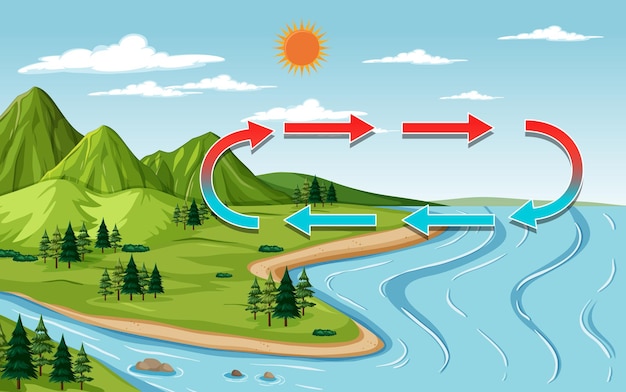River Facts – Exploring the Incredible Wonders of Earth’s Lifelines

Rivers are nature’s lifelines, flowing with energy and power.
Rivers carve their way through the land, leaving behind beautiful landscapes.
Rivers are home to a variety of aquatic life.
The longest river in the world is the Nile, stretching over 4,135 miles.
The Amazon River is known for its incredible biodiversity, housing thousands of species.
Rivers have been a fundamental part of human civilizations throughout history, providing water for drinking and agriculture.
The Mississippi River is one of the major rivers in the United States, running through several states.
Some rivers flow through multiple countries, bringing people together and connecting cultures.
The Ganges River in India is considered sacred by millions of people.
Rivers can create natural barriers and boundaries between different regions or countries.
The Colorado River carved the Grand Canyon over millions of years.
Rivers can be calm and peaceful, or wild and raging depending on the terrain and weather conditions.
The Yangtze River in China is the third longest river in the world.
Rivers have inspired countless poets, writers, and artists throughout history.
Many cities and towns around the world are built on the banks of rivers, utilizing their resources.
The Danube River flows through ten countries in Europe.
River water is essential for agriculture and plays a crucial role in food production.
River Facts – Exploring the Incredible Wonders of Earth’s Lifelines part 2
Rivers can erode the land and create stunning geological formations.
The Rhine River is famous for its romantic castles and picturesque landscapes.
Rivers are often used for transportation, allowing the movement of goods and people.
The Colorado River provides water to over 40 million people in the southwestern United States.
Rivers can be a source of renewable energy through hydroelectric dams.
The Amazon River discharges more water than any other river in the world.
Rivers can be a great source of recreational activities such as boating, fishing, and kayaking.
The Volga River in Russia is the longest river in Europe.
Some rivers freeze over during winter, allowing for activities like ice skating and ice fishing.
Rivers have different names in different languages, reflecting their cultural significance.
The Indus River is one of the longest rivers in Asia, flowing through Pakistan and India.
River water is often used for irrigation, supporting agricultural productivity.
The Nile River was crucial for the development of ancient Egyptian civilization.
The Congo River is the deepest river in the world, reaching depths of over 720 feet.
Rivers have shaped the landscapes of many national parks, creating breathtaking views.
The Thames River in London has been a vital waterway for centuries.
Rivers can create deltas where they meet the sea, forming unique ecosystems.
The Mekong River flows through six Asian countries, sustaining millions of lives.
Rivers can change their course over time, reshaping the land around them.
The importance of rivers in human history is evident in myths and legends from different cultures.
The Murray River in Australia is the longest river in the country.
Rivers are powerful tools for erosion, breaking down rocks and carrying sediments.
The Hudson River in New York is known for its scenic beauty and diverse wildlife.
Rivers are a source of inspiration and tranquility, offering peaceful moments of reflection.
The Rhone River in Europe is famous for its wines and vineyards along its banks.
Rivers can create habitats for rare and endangered species, making them important for conservation.
The Tigris and Euphrates Rivers were the cradle of civilization in ancient Mesopotamia.
Rivers have a timeless charm and allure, captivating us with their ever-flowing nature.

